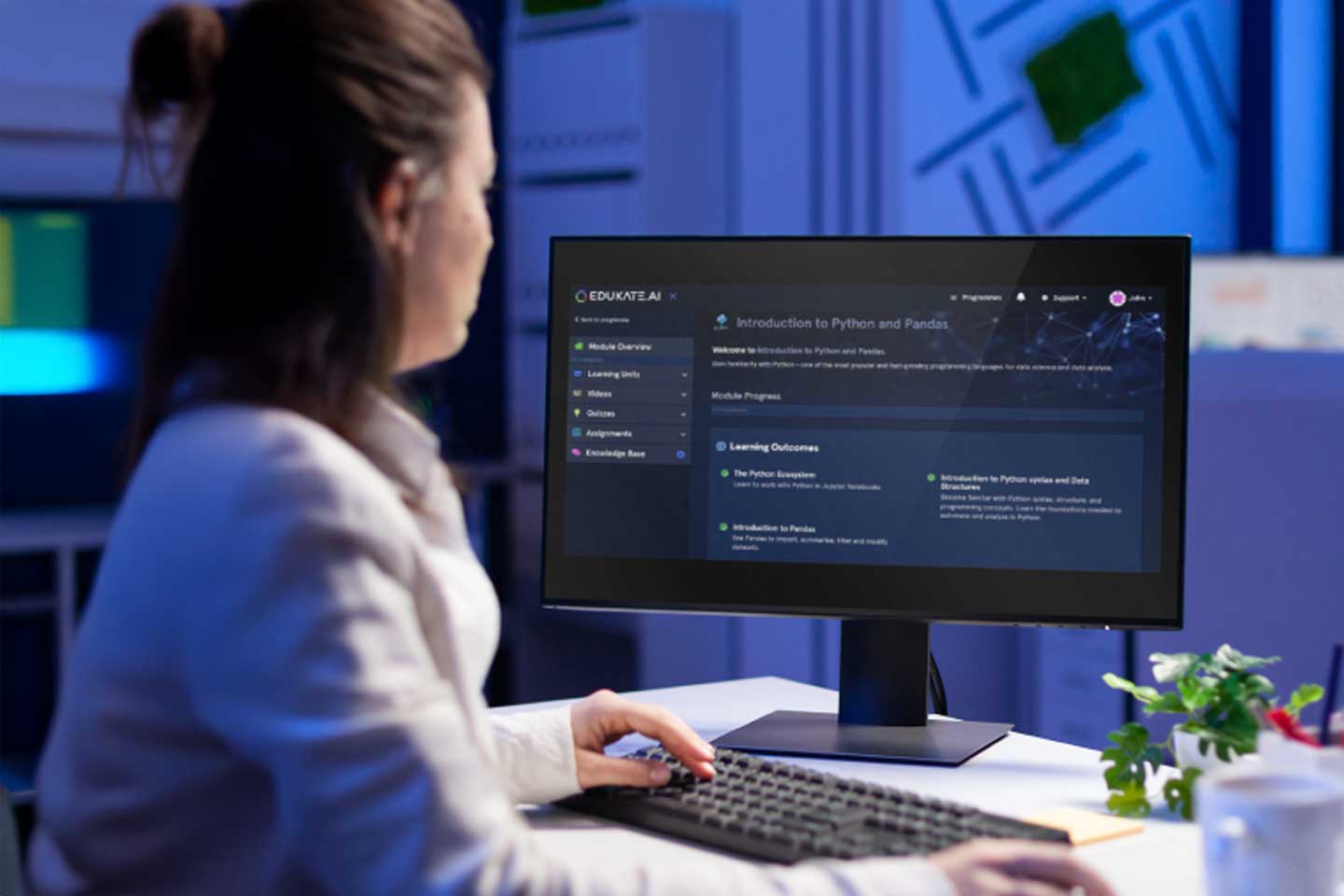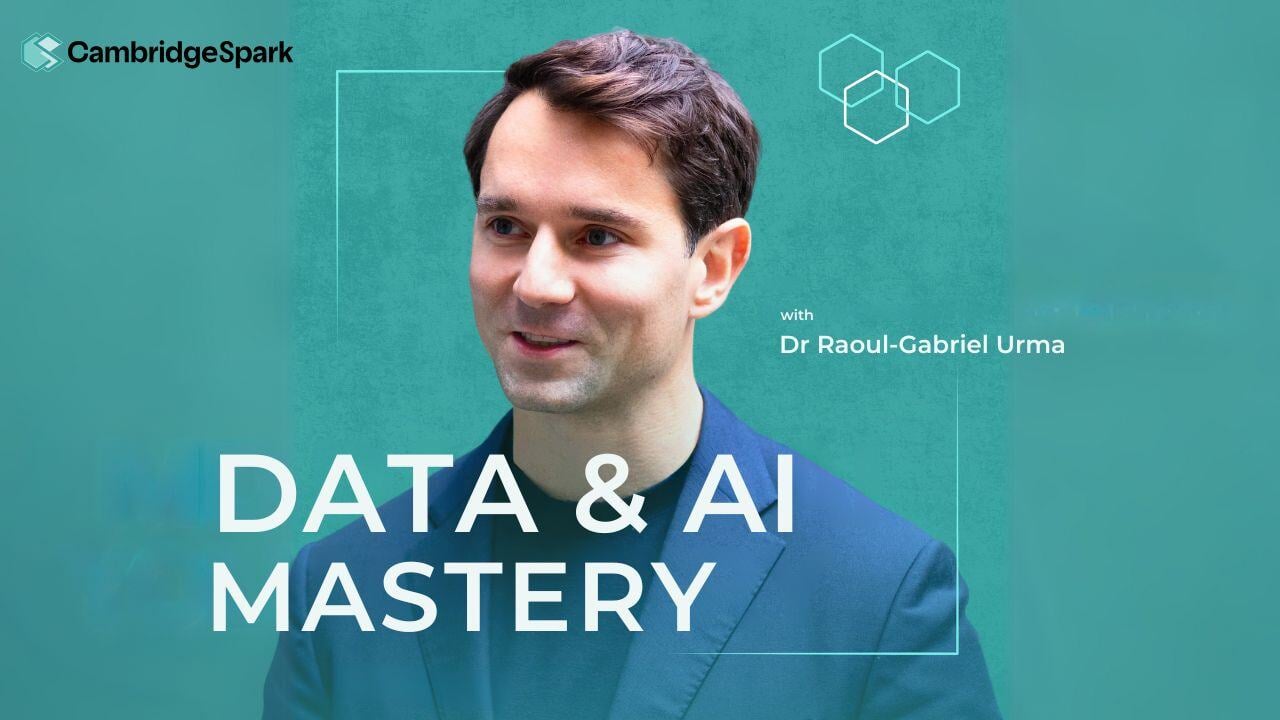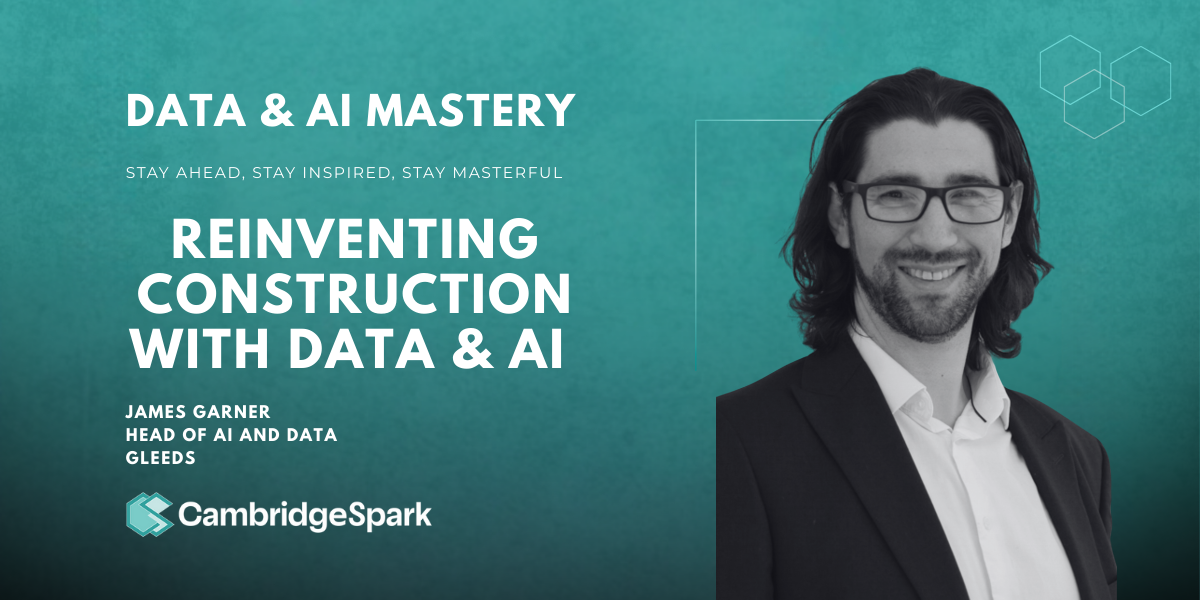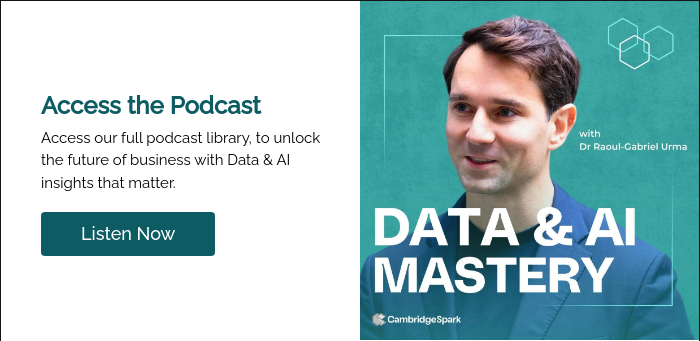In many industries, AI has already moved from buzzword to business-critical. But in more traditional sectors like construction, AI can still feel out of reach. Something for tomorrow, not today.
After all, how do you bring cutting-edge technology into a world built on spreadsheets, compliance checklists, and time-tested workflows?
The good news is that it’s very much possible. And it doesn’t require a massive budget or a ground-breaking AI strategy.
In a recent episode of Data and AI Mastery, we spoke with James Garner, Head of AI and Data at global construction consultancy Gleeds. He shared how his team introduced AI into one of the world’s most established industries. The story is both practical and inspiring, proving once again that even the most traditional industries can lead in the digital age if they’re bold enough to try.
Here are some of the key lessons from the conversation.
Tap Into Your Curiosity
James's journey into AI didn’t start with a strategic mandate. It began with a single thought-provoking question posed by a professor at Imperial College during a project conversation:
“Why are you doing it like that?”
That question sparked a collaboration, bringing two undergraduate machine learning students into Gleeds for a short industrial placement. Their task? Build a basic model using existing project data to forecast costs.
“It was crude, it was primitive, but it showed that this stuff was becoming real. And that's when I was like, I've got to wake up to this,” James said.
That early proof of concept didn’t transform Gleeds overnight, but it shifted the company mindset. It planted a seed of innovation that grew into something much larger.
Experimentation Over Perfection
In traditional industries like construction, the instinct is often to “plan first, build later.” But in AI, that approach can hold you back. That’s why Gleeds took a different route.
James explains, “The main point was that we had a team of people who were just fascinated and just wanted to experiment and try things out. And I still think that is the best way in this, because it's moving so fast. It's really hard to take this technology and try and put a business case against things because by the time you've written the business case, sent it, got it approved, put an implementation plan together, it's out of date because the technology's then moved on to the next thing. So a better way is just to experiment in a safe place with it and come up with proof of concepts.”
Instead of waiting for the perfect conditions, Gleeds chose to move quickly. They fostered a culture of experimentation, hosting hackathons, working with public datasets, and testing off-the-shelf tools like ChatGPT and Microsoft’s AI Foundry.
This gave their team the freedom to test ideas, fail safely, learn quickly, and prove value through working prototypes. It also gave leadership the confidence to continue investing, not because of abstract potential, but because of practical results.
Challenges to Watch Out For
Bringing AI into construction isn’t without its hurdles. James highlights three critical ones that any organisation from a traditional industry should be aware of:
- Waiting for perfect data- Data quality matters, but that doesn’t mean you shouldn’t start. What matters more is having the right people and processes in place to ask the right questions, test ideas, and refine over time.
- The need for “translators”- To make AI work, you need people who understand both the industry and data science. These translators are people who bridge the gap between domain expertise and data science. They are rare but absolutely essential.
- Culture is slow to change- especially in industries like construction, built on safety, compliance, and long timelines; changing mindsets is a long game.
Culture Is the Real Transformation
Technology will always evolve, but it’s the mindsets and behaviours that truly define progress.
As James nicely puts it, “We're not in a world anymore where you go to university in your twenties and get a bunch of skills that are going to be relevant for the rest of your life. We've got to get used to the fact that probably every five years we're going to have to retrain into something.”
That’s especially true in industries undergoing digital transformation. Lifelong learning, digital confidence, and a culture that encourages experimentation will be the difference between leading and lagging in the age of AI.
Final Thoughts
You don’t need perfect data. You don’t need a flawless roadmap. You don’t even need to change everything all at once.
What you need is:
- A real business problem worth solving
- A team with the curiosity to explore
- A culture that values progress over perfection
At Cambridge Spark, we help organisations turn ambition into action, equipping professionals with the practical data and AI skills needed to lead in a digital-first world. Our mission is to enable innovation in every sector, including those where transformation may seem out of reach. Learn more about how we can support with our education programmes.





